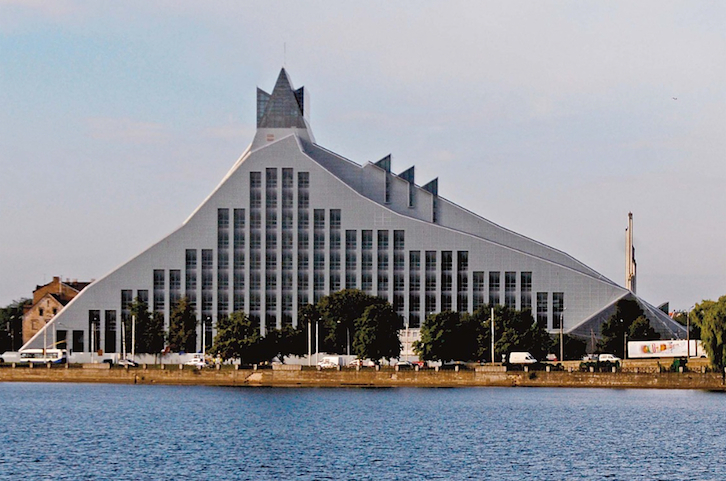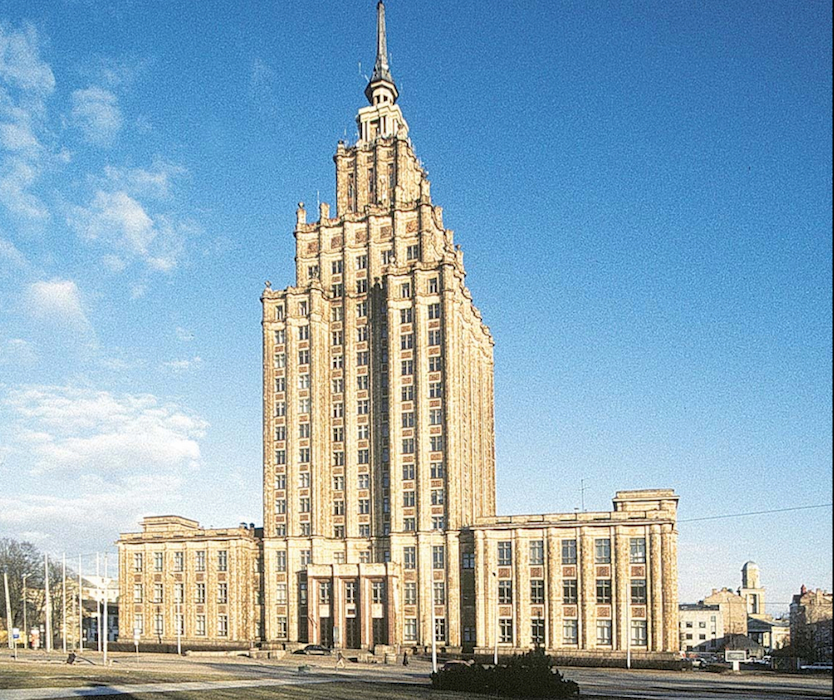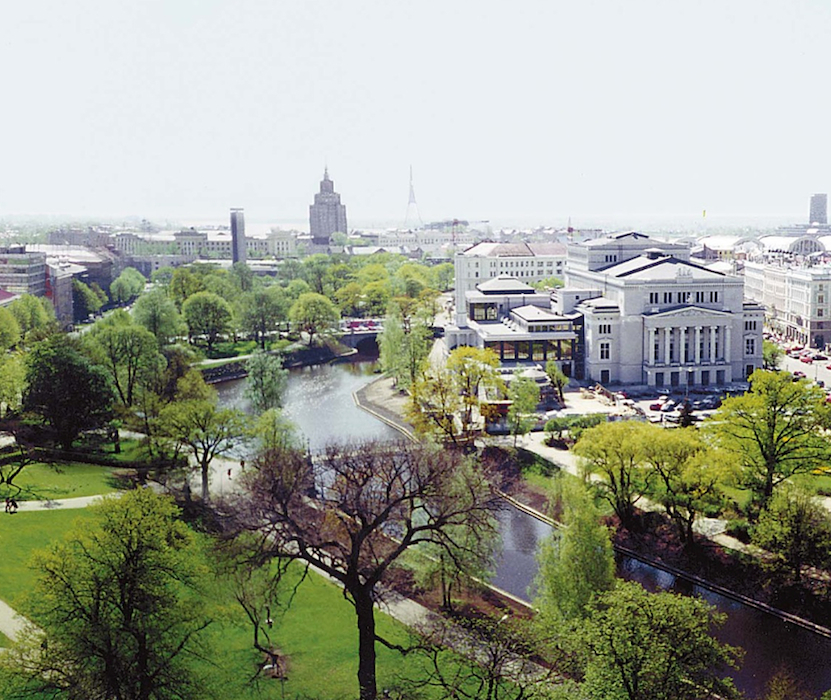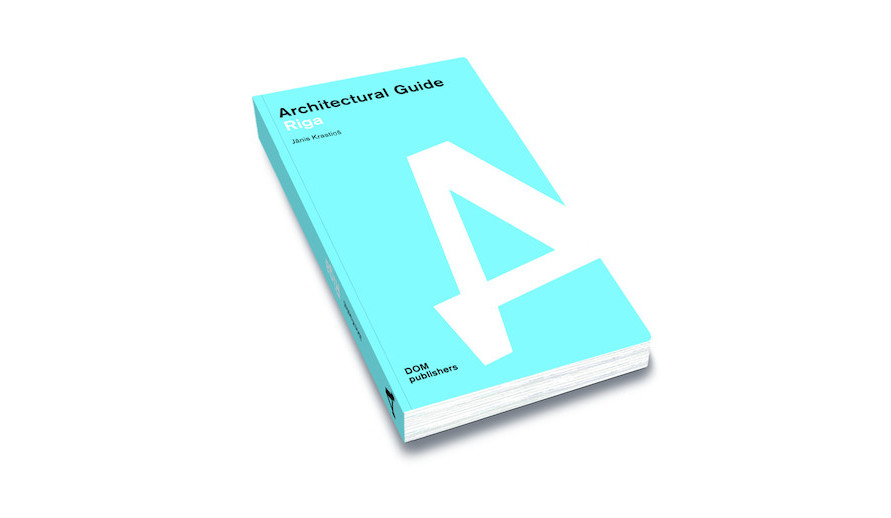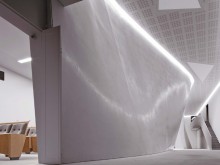Those who have witnessed Riga’s architectural splendors understand why Latvia’s largest city was designated the European Capital of Culture for 2014. Founded in 1201, the capital of Latvia was a member of the Hanseatic League, an economic alliance of merchant guilds formed during the late Middle Ages that left an incredible architectural heritage in the member cities along the coast of Northern Europe.
As a UNESCO World Heritage site since 1997, Riga’s historical center is notable for its medieval Old Town and its late 18th-century traditional wooden buildings, as well as one of the world’s finest collections of Art Nouveau architecture, which was built during Riga’s reign as the fourth-largest city in the Russian Empire.
In addition to Riga’s surfeit of Art Nouveau buildings, the city also features Soviet-style modernism and majestic functionalist edifices, the spectrum of which has been published in Berlin-based DOM Publishers’ most recent architectural guide, Architectural Guide Riga.
The first comprehensive architectural overview of the Latvian capital, Architectural Guide Riga is compiled by architectural historian and Riga native Jānis Krastiņš. Organized into nine geographical chapters, the guide presents nearly 800 buildings from the various periods of Riga’s 800-year history.
Riga’s architectural wealth is a consequence of its membership in the Hanseatic League in 1282, which provided economic and political stability. As Krastiņš writes in the guide’s introduction, “Riga is a city with a clearly perceptible urban structure, which can pride itself on its rich and varied architectural heritage acquired over centuries.”
The city’s Kalnciema Quarter with its recently-renovated wooden buildings retains its historic late classicism atmosphere, while Riga’s new National Library of Latvia on the left bank of the Daugava River has become Latvia’s new architectural icon. Designed by Latvian architect Gunnar Birkerts to evoke a crystal mountain, one of Latvia’s most beloved folkloric talismans, the library’s glass slopes mirror the silhouette of Riga’s Old Town – thereby bridging the continuum of Riga’s rich architectural legacy.
The lavishly illustrated volume enables readers to wander at will through the Baltic States’ largest city. An additional chapter highlights another 15 architectural monuments in the city’s environs.
The 400-page softcover guide includes more than 800 illustrations, as well as foldout maps.

